This is a Contax N1, a semi-professional 35mm SLR camera made by Kyocera in Japan starting in 2001. The Contax N1 was the very last 35mm film SLR ever made using the Contax name and one of the final Contax cameras of any kind. The Contax N1 uses a new autofocus Contax N-bayonet mount which replaced the Contax C/Y mount previoused used on Contax and Yashica manual focus SLRs since 1975. The N1 was a higher spec model of the consumer friendly Contax NX and came with a weather sealed and much larger body, plus a longer list of features, which allowed it to compare favorably to high end SLRs like the Nikon F5 and F6. Despite having a very good build quality, support for Zeiss’s excellent lenses, and a competitive feature set, the Contax N-series was too little too late, and struggled in the marketplace. Combined with a very high price tag and low demand, the camera sold poorly and was discontinued shortly after its release.
Film Type: 135 (35mm)
Lens: 24 – 85mm f/3.5 – 4.5 Carl Zeiss Vario-Sonnar coated 14-elements in 12-groups
Lens Mount: Contax N-Bayonet
Focus: 1.75 feet / 0.5 meters to Infinity, 5-point TTL Phase Detection Auto Focus
Viewfinder: Fixed SLR Pentaprism, 95% Field of View, 0.73x Magnification, Interchangeable Focus Screens
Shutter: Vertically Traveling Focal Plane
Speeds (Auto): 32 – 1/8000 seconds, stepless
Speeds (Manual): B, 4 – 1/8000 seconds
Exposure Meter: Coupled SPD Cell w/ TTL Center Weighted and Spot Metering, Programmed, Aperture and Shutter Priority AE Modes
Battery: 6v 2CR5 Lithium Battery
Flash Mount: Hot shoe with TTL Off the Film Plane Metering, 1/250 X-Sync
Other Features: Self-Timer, DOF Preview, Adjustable Diopter, Multiple Exposure and Focus Modes, Custom Menus
Weight: 1446 grams, 854 grams (body only)
Manual: https://www.cameramanuals.org/contax/contax_n1.pdf
How these ratings work |
The Contax N1 was the first SLR to use the new Contax N-bayonet and the first Contax SLR to support auto focus lenses. It was a premium flagship camera with a huge list of features, excellent build quality, and excellent lenses. The camera is large and heavy, but maintains good balance with a heavy lens attached. The camera’s biggest drawback are its electronics, which likely will not stand the test of the time, and that it offers nothing better than the competition, making it a tough sell over similar early 21st century Nikon or Canon SLRs. | ||||||
| Images | Handling | Features | Viewfinder | Feel & Beauty | History | Age | |
| 2 | 2 | 2 | 2 | 2 | 1 | 0% | |
| Bonus | None | ||||||
| Final Score | 11.0 | ||||||
History
When Yashica started producing Contax SLRs in the mid 1970s, a new lens mount was designed to replace the fledgling M42 screw mount used by Yashica SLRs of the 1960s and 70s. The new bayonet mount would be used both on Yashica’s own cameras and the company’s premium lineup of Contax SLRs. The appropriately labeled C/Y mount had all the features a mid 1970s bayonet mount should, a three claw bayonet for quick and easy lens changes, a large throat to support wide angle and heavy lenses, support for automatic diaphragms, and the ability to automatically index the aperture ring to support in body exposure metering.
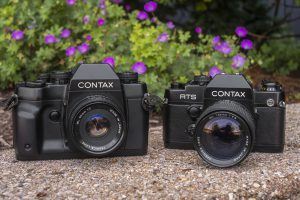
The C/Y mount was a fine mount, but barely a decade later, the wheels of progress demanded more changes to interchangeable camera lenses with the introduction of auto focus. Minolta was the first to realize that their old bayonet lens mount was insufficient for changes needed not only to support auto focus, but also electronic communication between lens and body. In 1985, with the release of the Maxxum 7000, Minolta abandoned the SR mount which was first introduced with the Minolta SR-2 in 1958 and released a new AF capable Minolta A (aka Maxxum) mount. Two years later, Canon followed with an all new EF (aka EOS) mount which like Minolta, replaced the company’s earlier R/FD/FL which first appeared in 1959 on the original Canonflex. Nikon and Pentax would choose to stick with their earlier F and K mounts, but would heavily update them to support the new technology.
Yashica, now under the ownership of Kyocera chose not to change their mount to accommodate Auto Focus. Whether it was because they didn’t want to change to their third mount in two decades, or if they felt their target customers were happy sticking with manual focus bodies is anyone’s guess, but the C/Y mount would live on with new SLR bodies like the RTS II, RTS III, and RX.
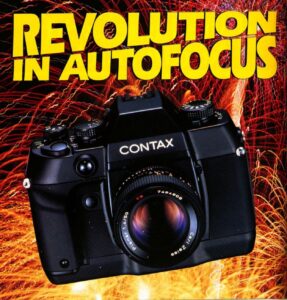
In 1996 came the first sign that Kyocera was warming up to the idea of making an Auto Focus SLR when they released the Contax AX, a camera that took the idea of automatic focussing, but rather than incorporate that into the lenses, took an approach similar to what Mamiya did with the Mamiya Six in the mid 20th century where the focal plane moves. The Contax AX had used an IR system similar to other AF SLRs to detect distance, but rather than focus the lens would move the film plane so that it would be in the correct alignment to make a sharp image. By far, the greatest benefit of this system was that it worked not only with any C/Y lens made, but it also worked with adapted lenses too. Since you could easily mount manual focus lenses with other mounts like the M42 or Exakta mount, you could use the Contax AX with a classic Asahi Takumar or Zeiss Biotar with full Auto Focus capability.
Although the Contax AX’s clever Auto Focus system worked quite well, it was slow, added significantly to the weight and size of the camera, and was expensive to build. The Contax AX was physically larger than any other Contax SLR, rivaling that of the largest Nikon and Canon pro SLRs, and with a list price of $2975 for just the body, was wildly expensive and out of reach of almost everyone. Whether the AX was intended as a proof of concept for future development of the technology, or a one off stop gap model before Kyocera could get out a more traditional Auto Focus SLR is uncertain.
In 2000, Kyocera would finally announce a true Auto Focus SLR which they would call the Contax N1. The new camera would be a flagship model, featuring an all new Contax N-bayonet which matched feature for feature what the competition was making at the time. The N1 would have a huge list of features, exposure modes, and accessories, many of which were new to the system. As is the case any time a company releases a new lens mount, new lenses had to be made, and Kyocera did not disappoint with a lineup of high quality Carl Zeiss prime and zoom lenses.
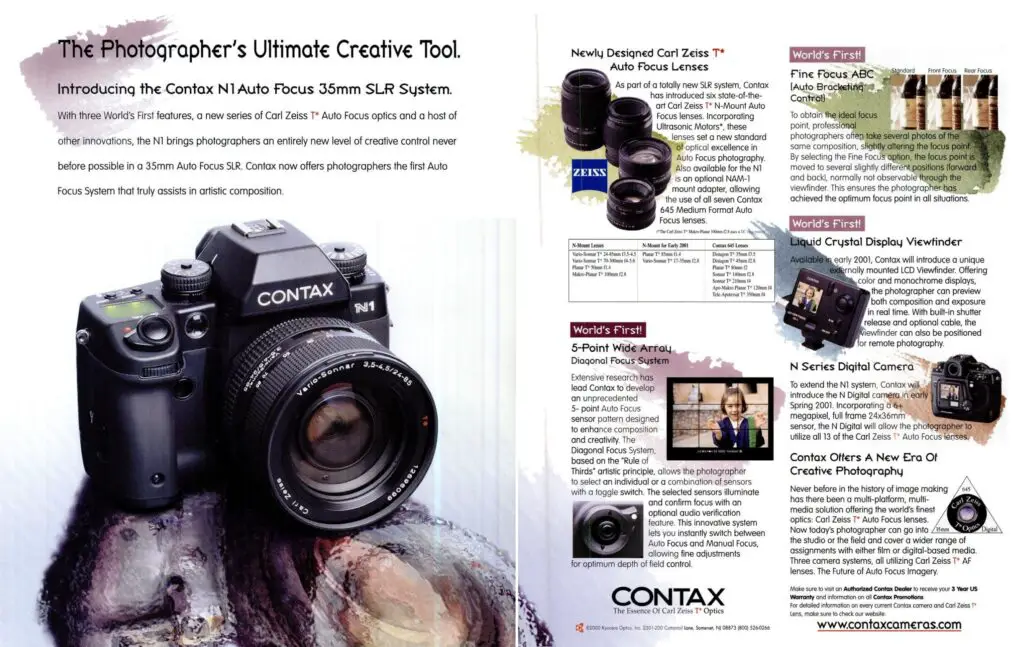
The Contax N1 was announced with three zoom and three prime lenses covering focal lengths from 17mm to 300mm. In addition to new N-mount lenses, a NAM-1 adapter was also produced which allowed users of the Contax 645 system to adapt every lens available to the N1. Unlike previous Contax SLRs produced by Yashica and Kyocera, there would be no Yashica equivalent or other bodies using the N-mount.
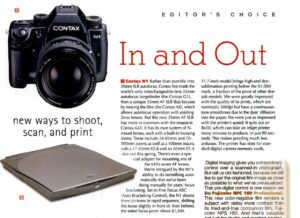
In addition to their “go big or go home” approach, Kyocera did something else as well, in that the new Contax N-series was developed both as a film and a digital platform. Along with the N1, a digital version of the camera was also planned which would eventually have the world’s first full frame 24mm x 36mm size sensor. The Contax N Digital was announced at the same time as the N1, but wouldn’t go on sale until 2002. That Kyocera saw a future in digital and designed their new film camera to co-exist was a pretty revolutionary concept and something neither Minolta or Canon could have done back when they made the switch to auto focus in the mid 1980s.
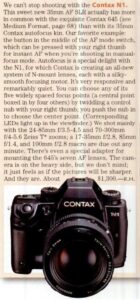
Reactions to the Contax N1 after its late 2000 announcement were very positive as most magazines were excited at the prospect of finally being able to see what an autofocus SLR with Zeiss lenses would be capable of. I could not find any in depth contemporary reviews of the N1, but the short previews to the left and the right generally capture enthusiasm for the new camera.
Upon its release, the Contax N1 carried a retail price of about $1300 body only or $2100 with the 24 – 85mm f/3.5 – 4.5 Vario-Sonnar lens. These prices when adjusted for inflation compare to around $2300 and $3725 today. As was typical in that era, actual street prices would have been about 25% cheaper, but still, that was a good chunk of change for someone to consider starting over with an entirely new SLR system at the dawn of the digital age.
In February 2022, around the same time the Contax N Digital would have been released, Kyocera announced a less expensive model called the Contax NX. The NX was aimed at the entry to mid level consumer market and had a smaller and lighter weight body with a pop up flash, all new flash metering modes and a slower top and X-sync shutter speeds of 1/4000 and 1/125 respectively. With the NX came a new lens, the Carl Zeiss N Vario-Sonnar T* 28-80mm f3.5-5.6 which was sold as a kit lens for the N1, although all previous N1 and N Digital lenses would work with it.
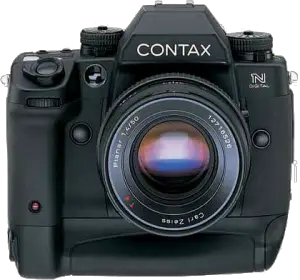
There were a lot of things to like about the Contax N-series. The cameras were built to a high standard, had a competitive feature set, and supported world class Zeiss lenses. That Kyocera also released a digital version of the camera parallel to the film camera was a good decision too, and at the time, all signs pointed to the Contax N-series to become a popular and successful line of film and digital cameras.
Today, we have the benefit of hindsight to know that didn’t happen. Contax N SLRs and lenses sold slowly and despite positive reviews, barely made a dent in the market. Facts such as consumers tiring of yet another SLR system to start over with, plus the excitement of the dawn of the digital age quickly overshadowed any excitement for the cameras and lenses. In my opinion, the N1 was a victim of timing. It came too late for people to be excited about a new film SLR, but was just a tad too early to miss out on the rising popularity of digital cameras. I bought my first digital camera in 2002, and at that time, I was not looking for a pro level full frame DSLR with support for high quality and expensive Zeiss lenses. Had Kyocera had the foresight to release the camera 5-6 years earlier, I think there’s a chance that consumers would have been more welcoming to the system, but as it was, the N1’s release was too late for film and just a tad too early for digital.
These cameras are not common today so finding examples in good condition cheaply can be a challenge. In addition, the N1 came out in the era of increased electronics, which on some cameras have not held up well. While there is no reason to believe that a Contax N1 can’t still be a good and reliable camera today, there is a lot of evidence that this era of highly electronic SLRs will not stand the test of time.
My Thoughts
The Contax N-series was a late addition to the semi-professional 35mm SLR market. At the time, Nikon and Canon were at the top of the market and those who ever tried to complete with them either had gone out of business, or abandoned the market altogether. Minolta and Konica were seconds away from merging and then ultimately going out of business, Pentax only made consumer friendly and entry level SLRs, and Olympus had completely left the interchangeable lens 35mm SLR market altogether.
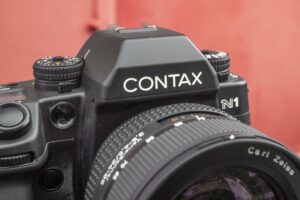
Kyocera, the makers of the Contax SLRs must have thought they had one more chance at success in this market and introduced a new autofocus bayonet lens mount. Changing mounts from a manual to auto focus mount is something that was done before as Minolta and Canon both did it in the 1980s and Nikon and Pentax both made significant updates to their existing mounts, but for a company to hit the reset switch in the 21st century was a huge risk.
If you had never heard of the Contax line of SLRs and were seeing the N1 for the first time, you would have no idea this was an all new SLR. The camera has the look and feel of a professional SLR from 2001. Looking much like a Nikon N5 but without the battery grip, the camera has a very high build quality and excellent feel. In my hands, the camera has a heft suggesting some type of magnesium or aluminum chassis beneath, but I was unable to find any detailed info about its makeup, or whether the body is weather sealed, but my best guess is that it is not. The body is covered in a black matte finish with a luxurious feel to it. The rear film door, hand grip, and sides of the camera have a rubberized finish, which on this example is showing no signs of becoming sticky like happened with many Nikon, Minolta, and Canon cameras of the same era.
By itself, the body weighs a reasonable 854 grams, but when mounted with the very large Vario-Sonnar 24-85mm standard zoom lens with its 82mm filter thread, the weight escalates to 1446 grams which is quite heavy, especially for a camera with the equivalent of a kit zoom. Although heavy, the camera is nicely balanced and doesn’t tilt forward like some lighter weight bodies do with leavy lenses.
Overall, from a tactile and cosmetic standpoint, the Contax N1 looks and feels exactly like a semi-professional flagship camera should. This is clearly not a cheaply made amateur camera!
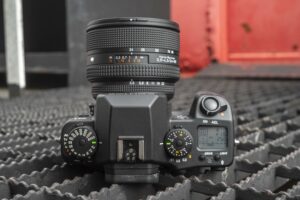
Up top the Contax continues in the tradition of earlier C/Y mount SLRs where the shutter speed dial is on the left. Manually selectable speeds from 4 seconds to 1/8000 are available, along with a green line for AE mode. A button in the center of the dial is the unlock for getting out of AE mode. When any manual speeds are chosen, you are free to turn the turn without needing the button.
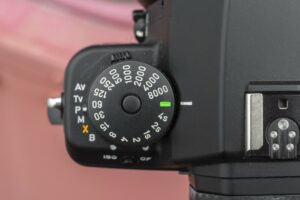
A collar around the base of the camera allows you to choose between various exposure modes from Programmed AE, Aperture and Shutter Priority, Manual exposure, and a dedicated 1/250 X-sync and Bulb speeds. This exposure mode selector is always locked into every position and requires a button on the back of the camera to be pressed to change modes. In addition to exposure modes, the collar switch has two additional positions to manually selecting an ISO film speed and accessing a Custom Function menu which allows for changing up to 20 special custom modes of the camera. The Contax N1 manual explains each of the 20 custom functions, but my favorite is number 16 which controls whether the film leader is left out of the cassette after rewinding the film.
The large and non-removable prism has the flash hot shoe up top, and to the right is a second dial which is exclusively used for EV compensation with a range from +/- 2. Strangely, two sets of EV numbers are printed on the dial, with one direction having 1/2 step intervals and the other having 1/3 step intervals. While I guess I can kind of see some instances where this would be useful, it seems a bit like a waste to use the space for a large dial like this only for 22 different positions of the same EV scale. If that wasn’t enough, a second option for EV compensation is in a collar around the base of the dial, giving you options of 0, 0.3, 0.5, and +/1 EV. I am unsure of all these controls were the result of some Kyocera focus group of photographers who REALLY love exposure compensation, but whatever your opinion of it, the N1 has you covered!
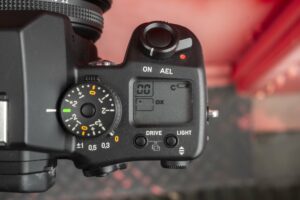
To the right is a fairly large LCD screen which shows you all the usual things you’d expect from a 21st century SLR such as number of exposures, a battery meter, and a variety of mode statuses. Below the LCD are dedicated buttons for Drive mode, and an LCD backlight button. In front of the LCD on a forward angled surface is the soft touch shutter release, surrounded by a combined power switch and AE-Lock position. Strangely, the power switch only indicates the On position. To turn the camera off, you must turn it to an unmarked position to the left of On. Weird.

The back of the camera has quite a few more controls than earlier SLRs would have, such as the button mentioned previously which unlocks the exposure mode selector, an adjustable diopter for the viewfinder, directional joystick for setting various camera modes, a focus lock switch, auto focus mode, a manual film rewind switch, and auxiliary connectors for a power device and remote shutter release. The joystick also controls which focus zones in the viewfinder are to be used for the auto focus system.
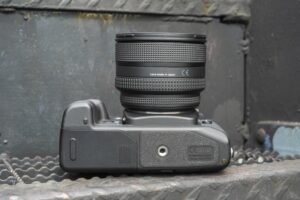
The base of the camera has a metal 1/4″ tripod socket in the center of the camera’s mass for excellent balance while mounted to a tripod, and the sliding door for the battery compartment where the 6v 2CR5 battery pack goes.
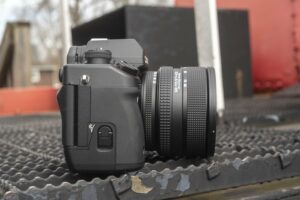
Each side of the camera has two different locks of the “fold and twist” type. On the left is the release for the film compartment and the right is the release for the battery compartment door on the bottom of the camera. Beneath the film door lock is a flash sync port for external flash units. Both sides of the camera have metal strap lugs, which definitely come in handy to better support the large and heavy camera.
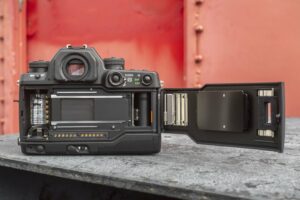
The right hinged film door swings open to reveal a very modern film compartment. In addition to the standard back, a data back was available for the N1 which not only would print dates, but could also print exposure information in between frames, and even an entire exposure printout in place of a whole exposure. I did not have this accessory, but wish I did!
Film transports from left to right onto a quick load drum. Loading a new cassette is as easy as extending the leader to a red mark, closing the door, and pressing the shutter release. The N1 supports DX film encoding and below the film gate are a bunch of electrical contacts for the data back. The film pressure plate is very large and covered in divots to reduce friction as film passes across it. Finally, there are the usual springs and rollers on the door to help with film flatness. Being an SLR from the 20th century, the foam light seals inside the door channel, on the hinge, and around the clear film peep hole on the door have not yet started to degrade, but as these cameras get older, this is something you’ll need to keep an eye on.
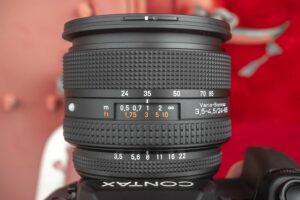
Looking down upon the large 24-85mm Vario Sonnar are three rings. Closest to the lens mount is the aperture ring. Much like lenses from professional camera systems such as the Nikon F, selections from f/3.5 to f/22 are available with strong click stops to avoid accidental changes. In front of that is a rubberized manual focus ring. Unlike some AF lens systems in which manual and automatic focus are chosen with a switch on the lens, with the Contax N-system, switching from manual to automatic focus is done via a switch on the back of the camera. In manual focus mode, the ring can be turned from a minimum 1.75 feet / 0.5 meters to infinity. Also like most AF lenses, there are no stops at the minimum or maximum focus position. The ring will continue to turn beyond those spots, which for someone not used to AF lenses, feels odd, but this is done because modern AF systems are extremely precise and sometimes need to work beyond a physical limitation. Forward of the focus ring is the large and also rubber covered zoom ring. With only a 3.5x zoom range, the zoom ring has a short throw, going from 24mm to 85mm in about 1/8th of a turn of the ring. The front of the lens has an external bayonet for a lens hood, and is internally threaded to accept 82mm filters.
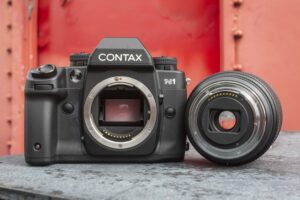
Up front, the camera has a large and prominent hand grip for the photographer’s right hand. On the lower portion of the grip is a red LED which blinks when the self-timer is set, and in between the grip and lens mount is an exposure check button which activates the meter and LCD display inside the viewfinder to check exposure. Pressing this button performs the same action as half-pressing the shutter release, but without the risk of actually firing the shutter. Above the button is an AF assist light which blasts an infrared beam at your subject to aide in low light focusing.
On the side of the mirror box, near the bottom of the camera is a depth of field preview button. The opposite side of the mirror box has a metering mode switch with options for spot, average, and matrix metering. Finally, to the right of the lens mount on the main body is the bayonet lens release button. Removing the lens requires pressing this button while rotating the lens counterclockwise. Installing the lens is the opposite of removal. Inside of the lens mount, you can see 10 electronic contacts which are used to communicate settings between the lens and body.
Being a 21st century SLR, the viewfinder offers full information and is very bright, even with an f/3.5 zoom lens attached. In a recent episode of the Camerosity Podcast with Rick Oleson, Rick went into great detail about how focusing screens work, and in the autofocus era, manufacturers were able to design focusing screens to maximize the brightness using only the light passing through the very center of the lens with a smaller aperture. It was a long but fascinating discussion, but explains why the Contax N1 is so bright with such a slow lens mounted. For those who prefer to use the N1 primarily in manual focus mode only, Kyocera made available at least 3 interchangeable focus screens for the Contax N1 one of which has a traditional split image focus aide in the center.
Aside from the brightness, visible on the standard focus screen are 5 focusing spots which are backlit with a red LED depending on which one is used, plus a high contrast green back lit LCD display at the bottom showing all of the usual information you’d expect to see inside the viewfinder of a modern SLR. Choosing which of the 5 focusing spots to use is done via the small joystick on the back of the camera below and to the right of the eyepiece. To select the center, simply press the joystick in the center and it will be selected. Another neat tip is that when manually focusing the camera, pressing this joystick button immediately reverts you back to auto focus mode if you so wish.
Many early DSLR cameras were built using similar viewfinders to that of late 1990s or early 2000s film SLRs, but that the Contax N-system included both a film and digital SLR at the same time further links this display to that of a modern digital camera. For those of you Nikon fans, you’ll be happy to see a similar manual focus dot which confirms focus even when manually controlling the lens.
Repairs
In my quest to own and shoot a Contax N1, I actually came across two of these cameras. The first came from a reputable seller in Japan who listed the camera as Near Mint and in perfect working condition. Upon its arrival, the camera was definitely in excellent cosmetic condition and worked fine when I put in batteries, or so I thought.
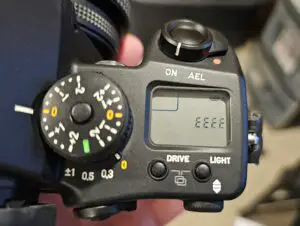
As it would turn out, the N1 had a strange fault, which was that upon turning the camera on with new batteries, the camera would power up, both the top plate and viewfinder LCDs would light up, the exposure meter and autofocus systems would work, and the shutter would fire at any speed, but only up to five shots. Upon firing the shutter for the sixth shut, the top LCD would display EEEE and the entire camera would lock up.
Once locked, turning the power switch off wouldn’t do anything. The only way to reset the camera was to momentarily remove the battery and put it back on. Once you did that, the camera would turn back in, as if nothing happened, but only for 5 shots. It did not matter whether I shot the 5 shots in quick succession or hours apart. I tried the camera in every possible AE mode, even manual exposure modes, shooting at slow speeds, or fast speeds, with or without film in the camera. Every time I’d get exactly 5 shots, and the 6th would brick the camera. Even stranger, I found that if I set the camera in Manual exposure mode and set the shutter speed to 1/8000, it would make it past 5 shots. I could shoot the camera as often as I liked and it would never lock up, but go back to any AE mode, or change to 1/4000 and it would lock.
This is certainly a strange and highly specific fault, but amazingly, I found other reports of this same issue with the exact same symptoms as I, only on the 6th shot, in any mode. In fact, I discovered the 1/8000 shutter speed trick online in a Reddit forum and was able to recreate it myself.
Sadly, none of the other people with this fault, many of which dated back to the early 2000s, were able to get past the error. Sending the camera in for service was the only suggestion and one that likely was easy to do twenty years ago, but with most people not wanting to touch a broken Contax N1 today, isn’t an option anymore.
This means that unfortunately, if you are in the market for one of these cameras, or if you have one already, and yours starts to exhibit this EEEE error after five shots, there is no workaround to get it to stop doing it. Your camera is dead…well, at least after every 5th shot.
My Results
Now in possession of a second Contax N1 without the dreaded EEEE error every sixth frame, I eagerly loaded up some fresh Fuji Superia 400 into the Contax and took it with me on a trip to northern Michigan, and after still having a few shots left on the roll, I finished it where I normally finish rolls, in Crown Point, Indiana. Impressed with my initial results, I quickly loaded up a second roll, this time an expired roll of Fuji Acros 100 for some black and white goodness.
It is often thought that the reason Kyocera took so long to make a proper autofocus SLR system is that Carl Zeiss did not believe they could produce lenses with sufficient quality to work with modern auto focus systems. Zeiss’s reputation as a top tier optics maker came with the expectation that any images shot with a Zeiss lens should deliver sharp results without any flaws or aberrations common with lesser lenses. They believed that if they made lenses for an inferior auto focus system, that their reputation could be tarnished by soft, out of focus images.
There is some logic to that thought, however this wasn’t an obstacle for other top tier SLR makers like Nippon Kogaku, Canon, or Minolta as each of those companies had been making AF equipped SLR lenses for over a decade prior to the Contax N’s release.
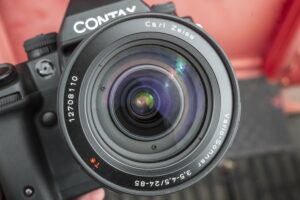
In addition to making a series of lenses for the new mount, a large number of them were zoom lenses. This meant that unlike earlier SLR systems which would usually support a large number of prime focal lengths, Zeiss could cover a wider range of focal lengths with a smaller number of lenses. The kit lens most commonly found on a Contax N1 is the 14-element 24 – 85mm f/3.5 – 4.5 Carl Zeiss Vario-Sonnar seen here.
It is clear that Zeiss’s decision to wait for an AF system that could live up to the optical quality of their lenses was a good one for the sake of image quality, but as I’ve discussed earlier in this article, the ultimate failure of the Contax N-system may have been a result of waiting too long. Whatever the outcome, the images from this lens and this camera are as good as any I’ve shot on film.
Sharpness, contrast, coverage, and color are excellent across the frame. The color images have an almost digital look to them, but the black and white images are even sharper, and more defined. Shooting images at the upper and lower limits of the 24 – 85mm lens where many zoom lenses are most likely to struggle, produced no obvious chromatic aberrations or vignetting, not even in images where the sky is present. Some day I want to have a chance to try out the Contax N-Digital DSLR to see how this lens performs digitally as I feel as though the difference between an A+ and A++ lens can’t be seen on film. If I can’t ever find a working N-Digital, perhaps a lens adapter to Sony E or Nikon Z mount might work, but a quick Google search only results in a small number of very expensive options. If I ever do shoot this lens digitally, I will be sure to come back and comment here, but for now, just know that this lens clearly outresolves 35mm film, so expect to get images as good as any you’ve shot on another A-list film SLR.
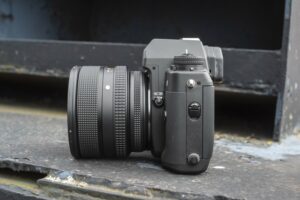
Beyond the lens, when describing shooting the Contax N1, I have to start with the camera’s size. The N1 is a large SLR, especially for one without an extended battery grip. Compare the Nikon F4 with and without the optional grip, and the N1 is quite a bit larger and heavier in every dimension. The 14-element 24 – 85mm Vario Sonnar lens with its monster 82mm filter ring adds another 592 grams of weight to the overall package for a total weight of 1446 grams (3.2 lbs) and you have yourself a large and wieldy device which begs for a thick and padded neck strap for long shooting sessions.
Amazingly, the combination of a large and heavy lens and body make for a well balanced camera. I never felt as if the N1 wanted to flop forward while holding it, nor did I feel as though my wrists were constantly fighting gravity while trying to handle the camera, it is heavy, but balanced. Ergonomically, most of the camera’s controls are logically placed and where you expect to find them, especially the shutter release which is on a forward angled platform over the right hand grip. One oddity of nearly every Contax SLR produced in the Yashica/Kyocera era is the decision to move the shutter speed dial to the left of the prism, instead of to the right like on most SLRs of the era. I never once found any explanation for this, other than perhaps to allow for the large EV wheel to be in a more accessible location.
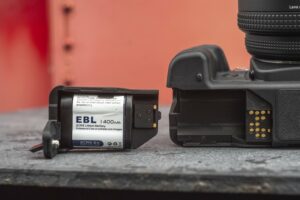
Like you’d (rightfully) expect from an early 21st century SLR, the viewfinder is large and bright, allowing you to see a sharp image even at small apertures, with a full information LCD below it. I’ve often remarked about late 1990s early 2000s film SLRs and commented at how closely their viewfinder resemble the first generation of DSLRs, and to know that Kyocera designed the Contax N-system as both a film and digital SLR further emphasizes how similar they are. For someone after the start of the new century looking to try out digital but wasn’t quite ready to abandon film, the Contax N1 would have been an excellent option.
In use, I found very little to dislike about the Contax N1. I almost said that Kyocera did their homework in coming up with what should be included in a semi-professional flagship SLR, but in reality, they already knew what should be included as they had been making top tier film SLRs for decades prior to the N1’s release. At the very worst, I can say that Kyocera failed to come up with anything new or unique that might have further differentiated themselves from the competition. I guess being the exclusive SLR maker for Zeiss lenses was good enough.
As I reach the end of this review, I struggle with what I think about the Contax N1. For sure, this is a well built camera with a selection of excellent lenses and a long list of features that will result in images as great as anything out there. On the other hand, this was a short lived SLR system with little to no support in the market. As an owner of a Contax N1, if my camera were to stop working, I would struggle to find someone to repair it. Even if it stays working, the amount of options for lenses and other accessories made for it is far less than other, more established SLR systems.
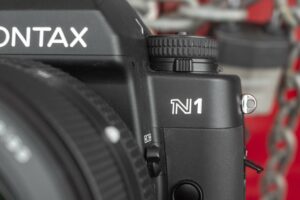
Perhaps the worst indictment I can make for the Contax N1 is that this is camera that does nothing better than other options out there, other than being able to boast about being the sole SLR system with dedicated Carl Zeiss lenses made for it. If you were in the market for a high end film SLR from the early 2000s, there are many Nikon, Canon, or even Minolta SLRs that I would recommend over this simply because there’s more options out there for future upgrades and repairs.
Sadly, this conclusion is becoming more and more common as the years go by. From the start of the ‘electronic age’ of the mid 1970s through the end of the 20th century, solder joints, integrated circuits, capacitors, and other electronic components will continue to fail. Sometimes there are workarounds or “hacks” that can be used to get this era of cameras back up and running, but I firmly believe that in another 5-15 years from now, we’ll have a large number of perfectly working classic mechanical SLRs and rangefinders, but then there will be a big gap of electronic cameras that are no longer operable, and sadly, the Contax N1 will be in that pile.
If you have an opportunity to pick up a confirmed working Contax N1 for a price you can afford, and are interested by its use of Zeiss lenses, or perhaps maybe you are tired of the same old options out there and just want to try something different, go for it. This is a heck of a camera that makes excellent photos. Just don’t put yourself into a situation where you need to depend on it.
Related Posts You Might Enjoy
External Links
http://camera-wiki.org/wiki/Contax_N1
https://casualphotophile.com/2020/09/30/contax-n1-review/
https://philip.greenspun.com/photography/equipment/contax-n1

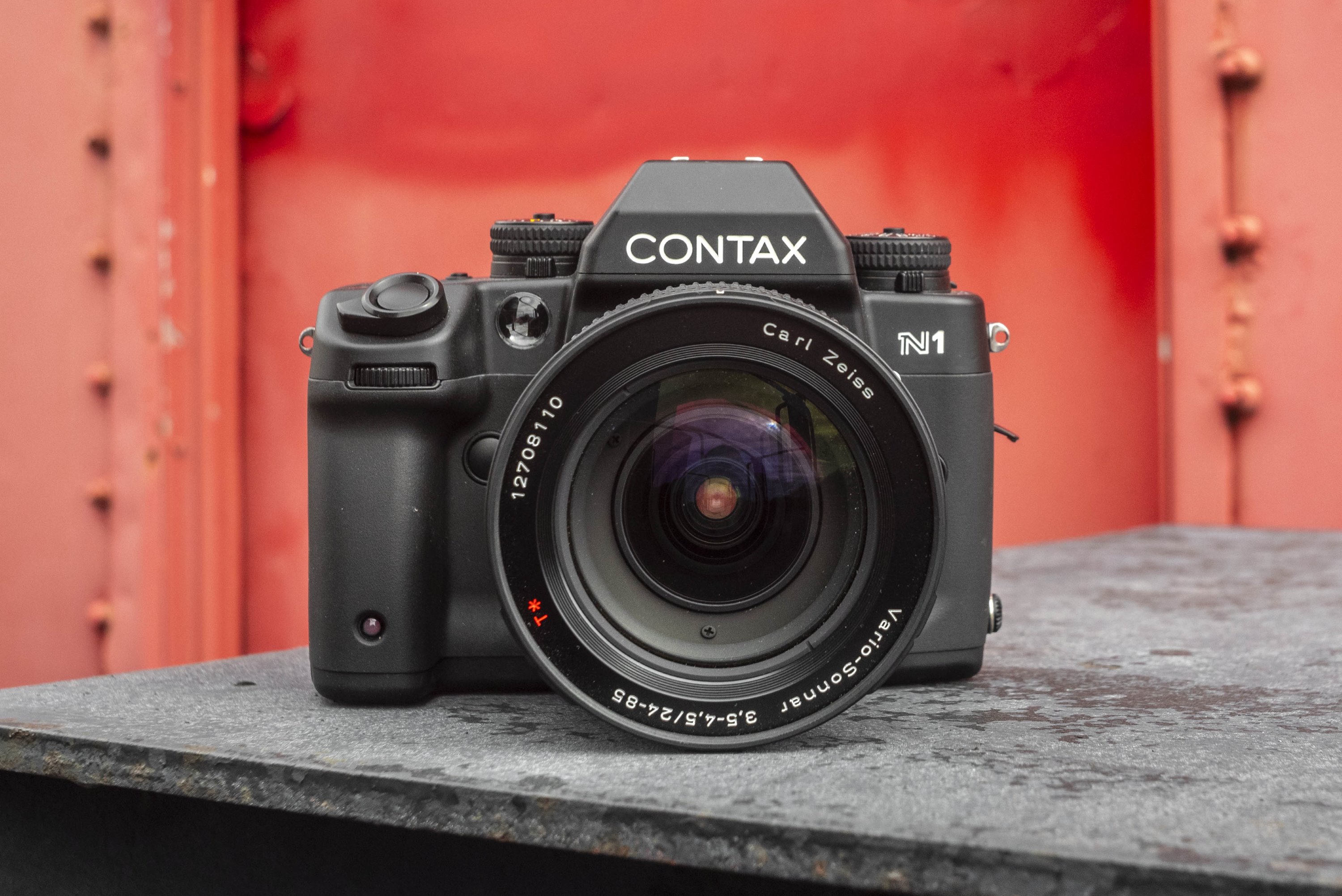
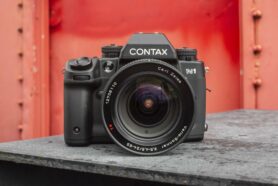
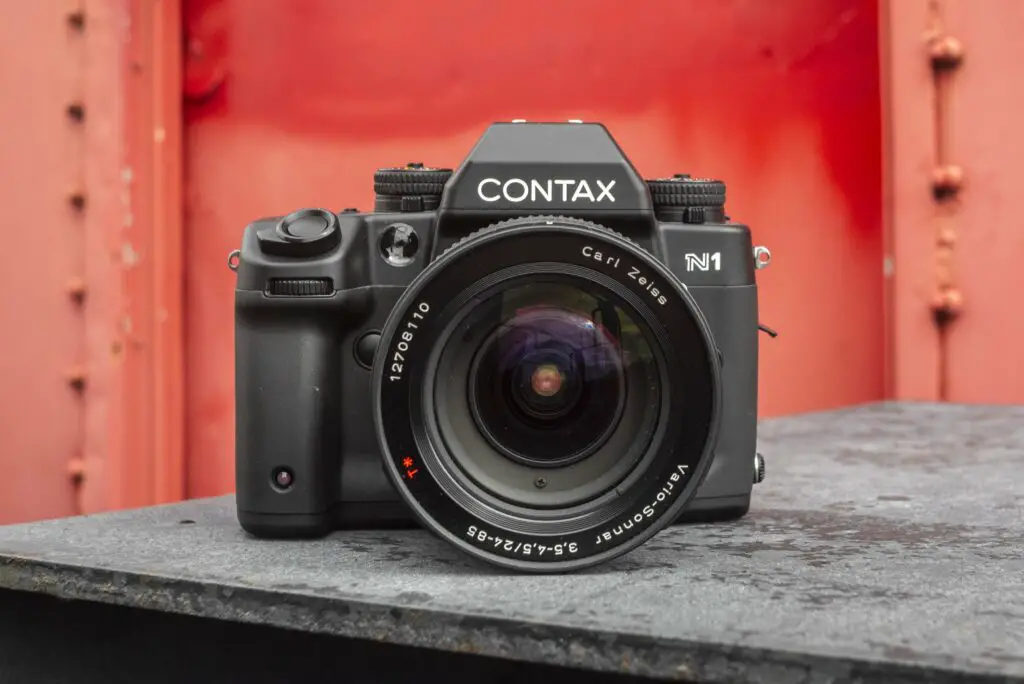
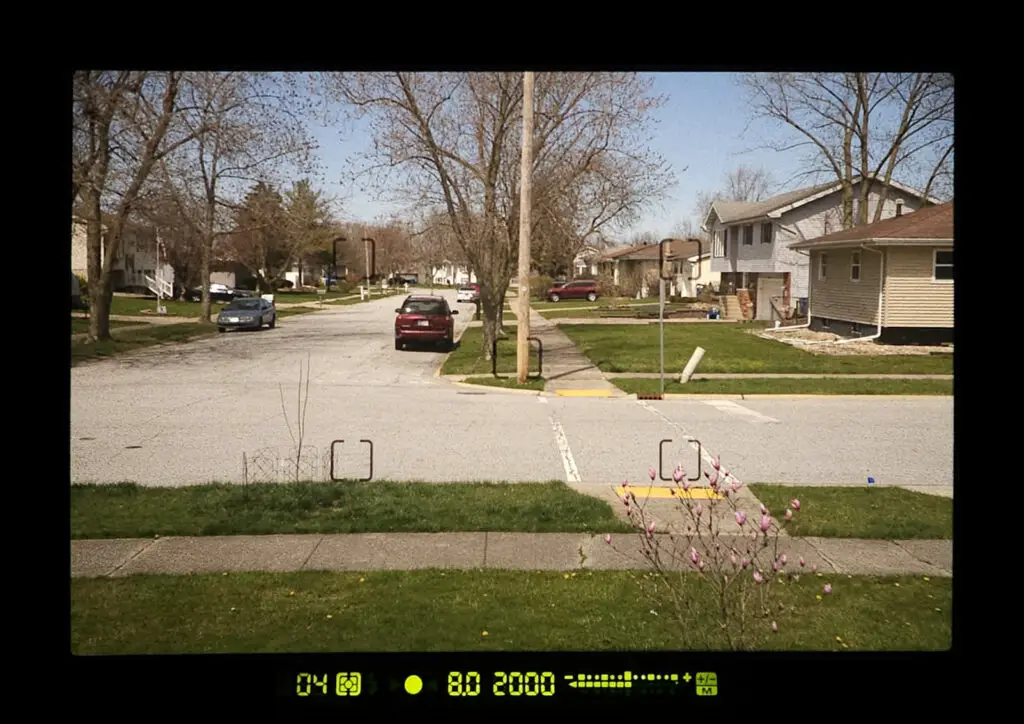
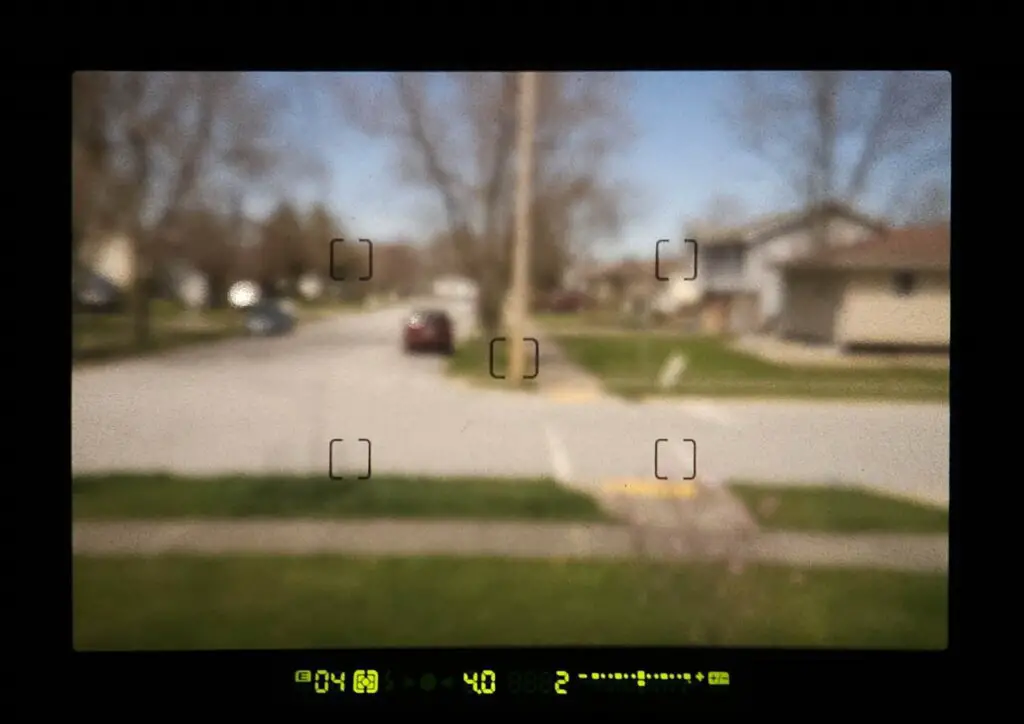
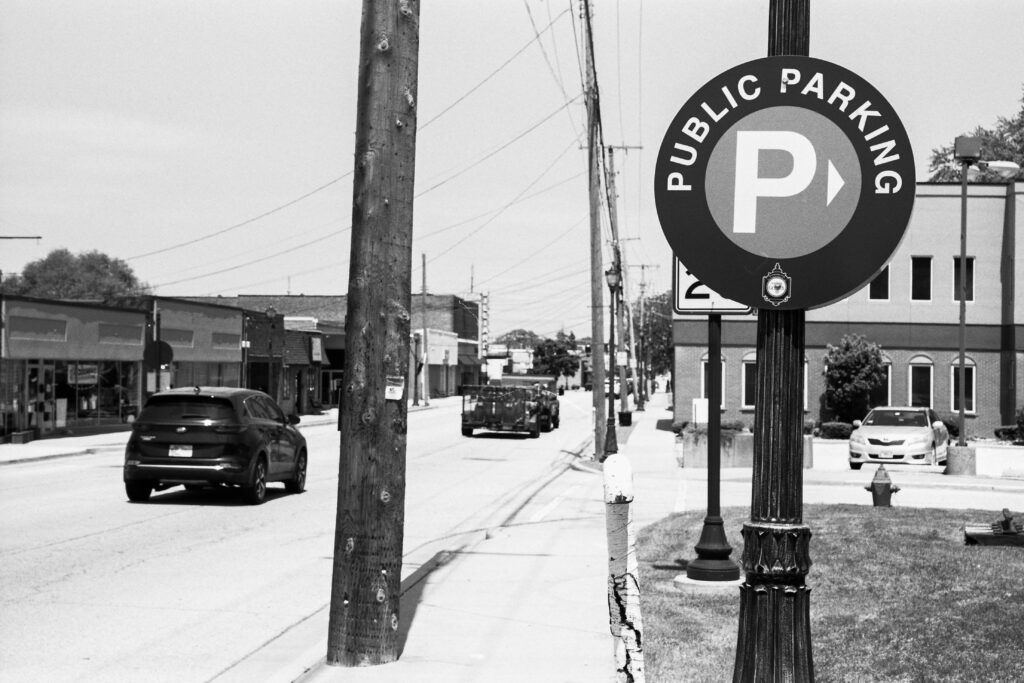
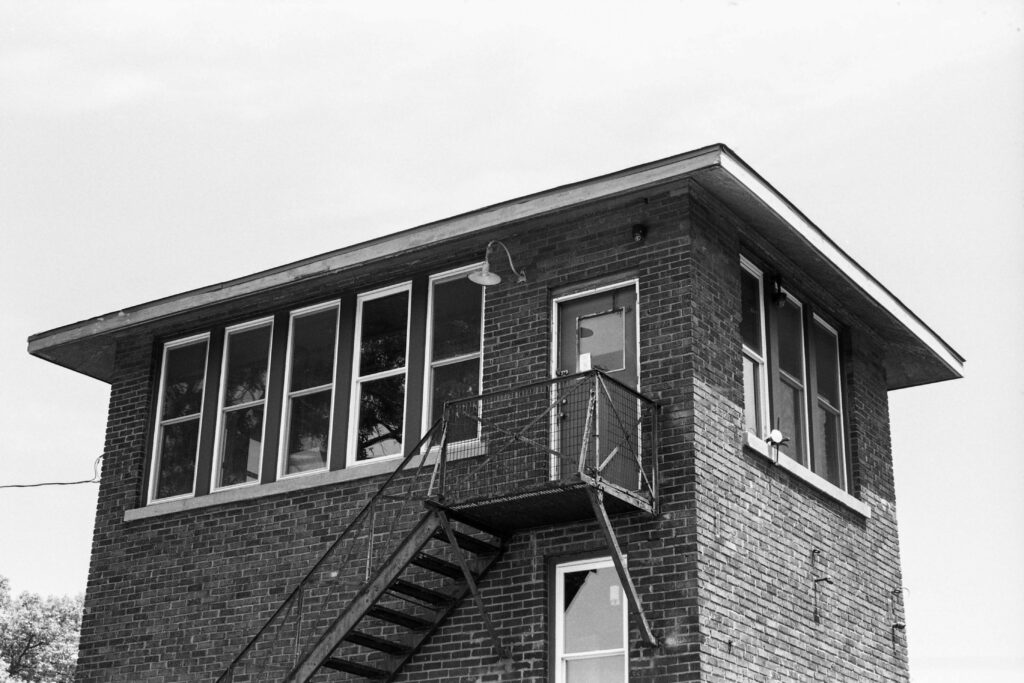
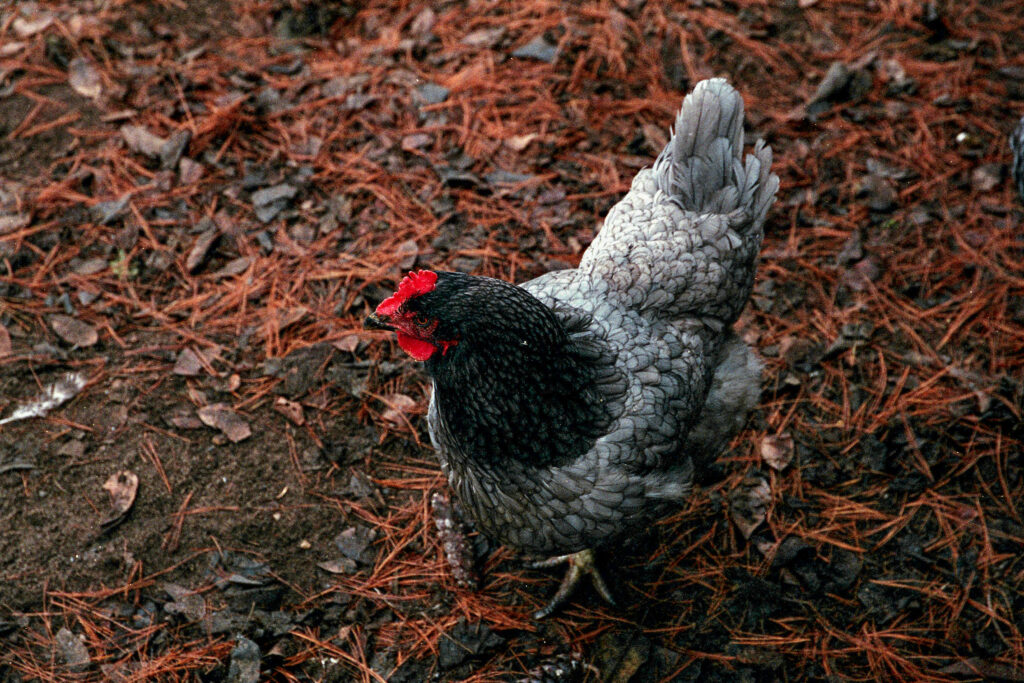
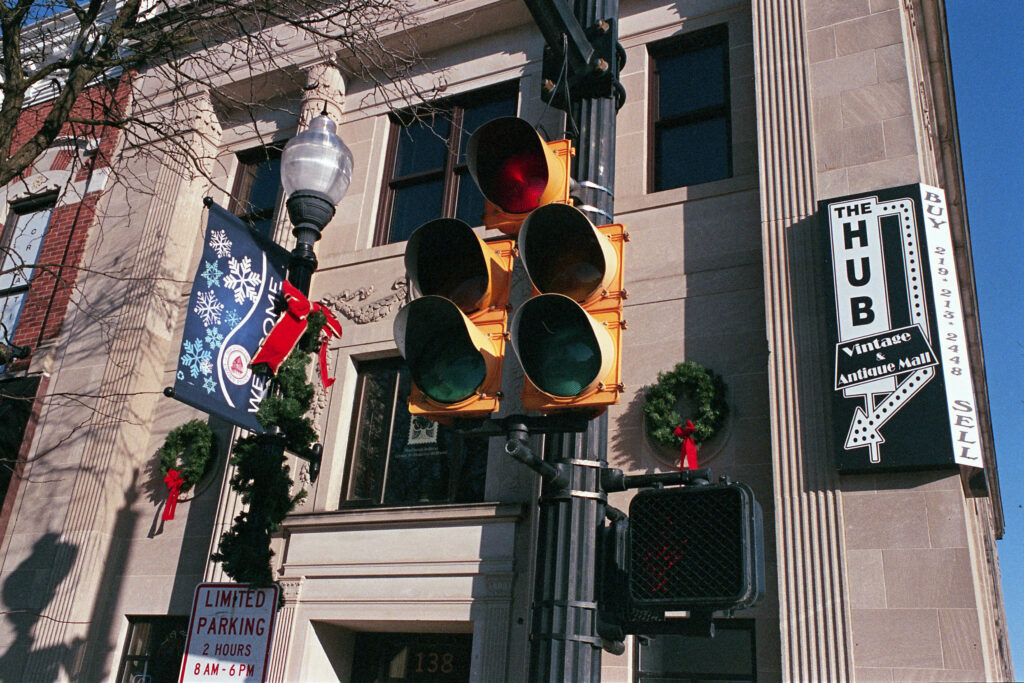

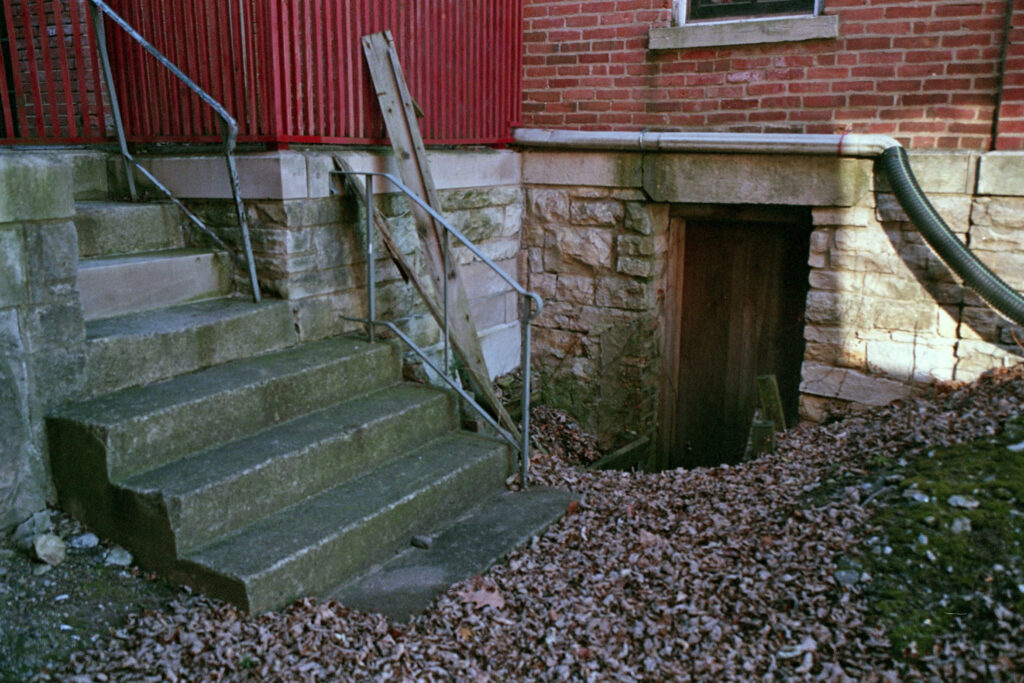
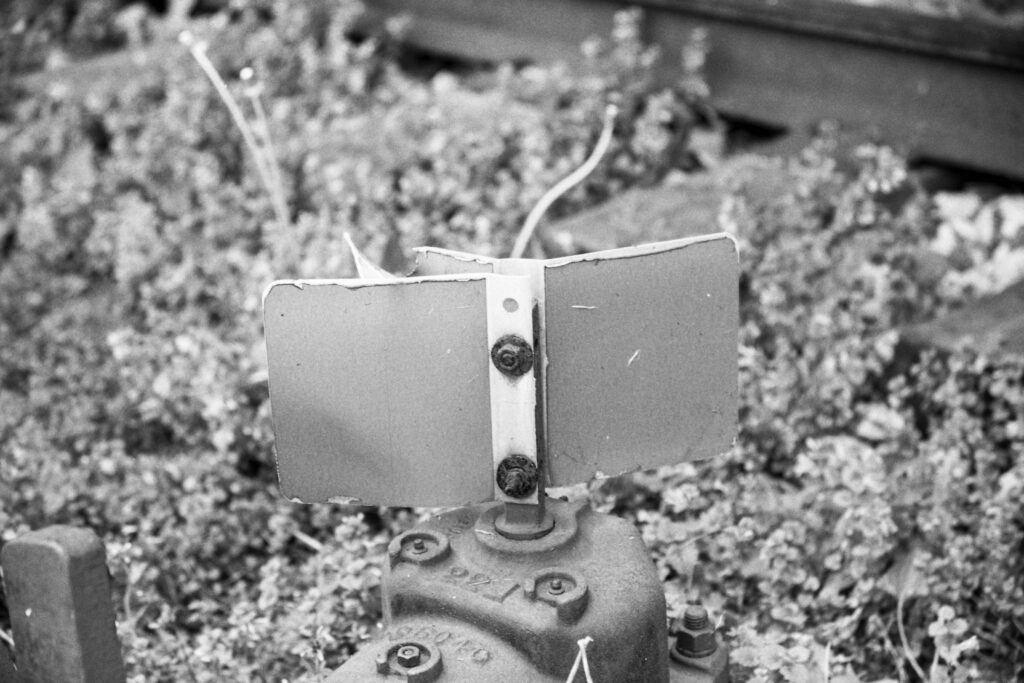


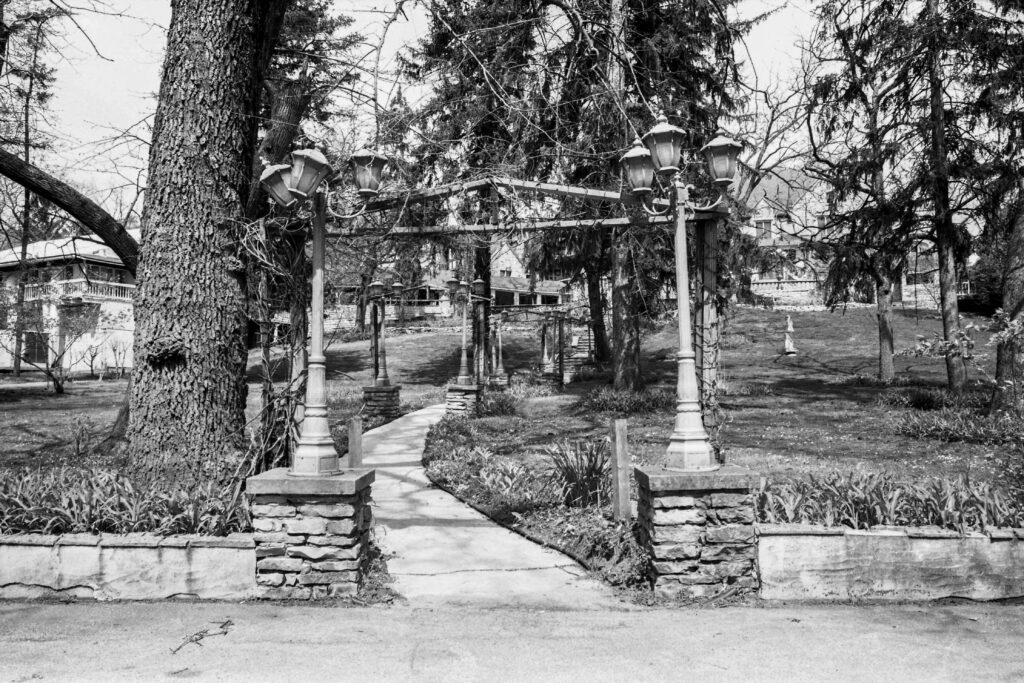
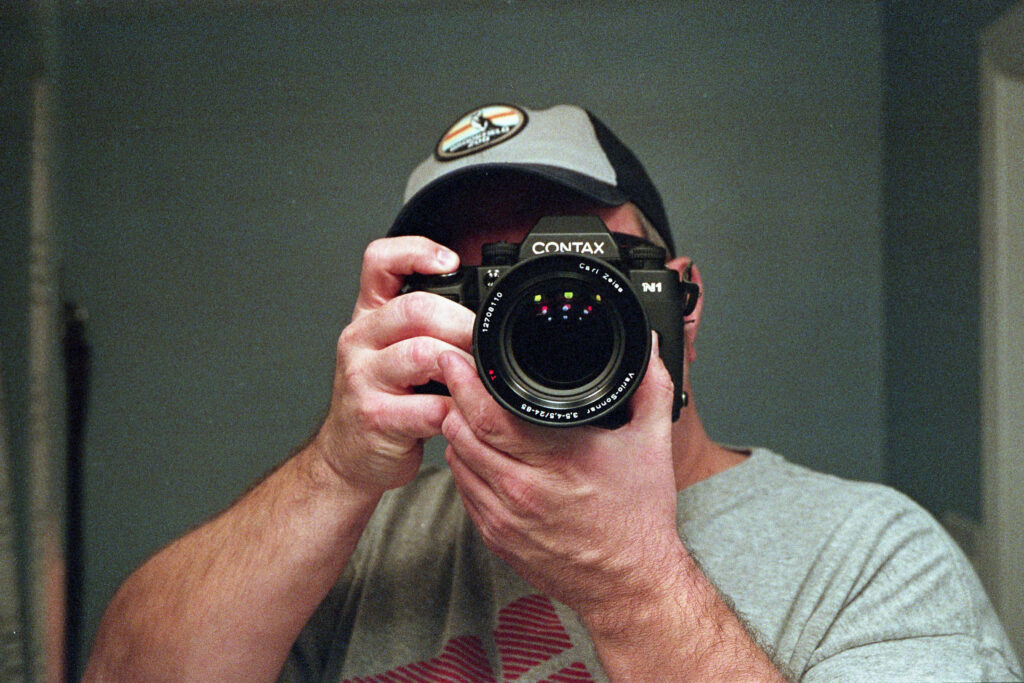
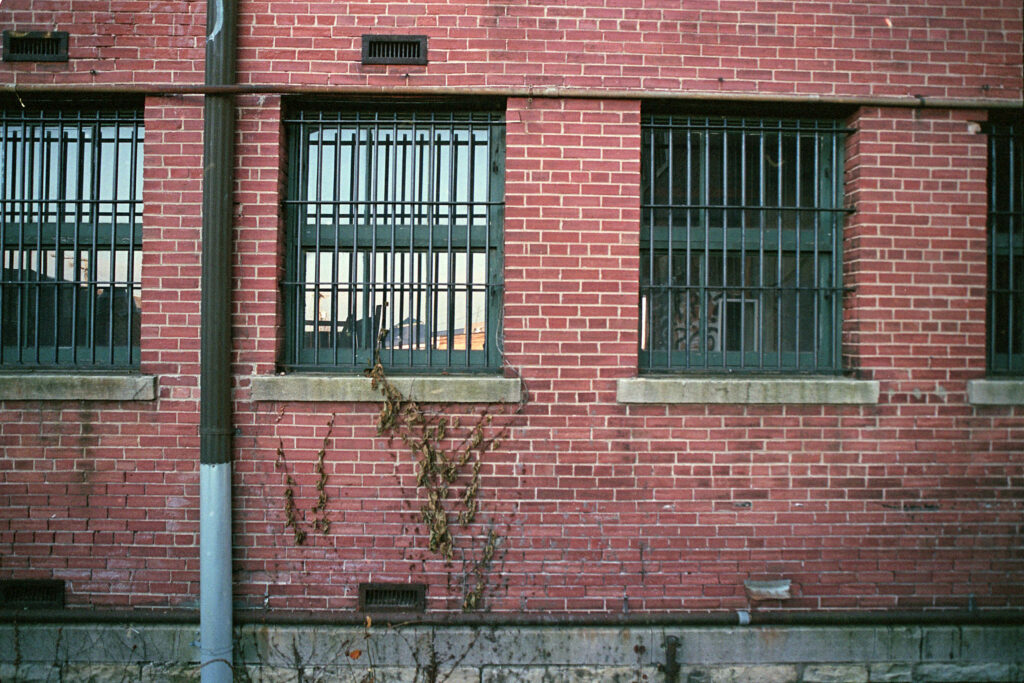

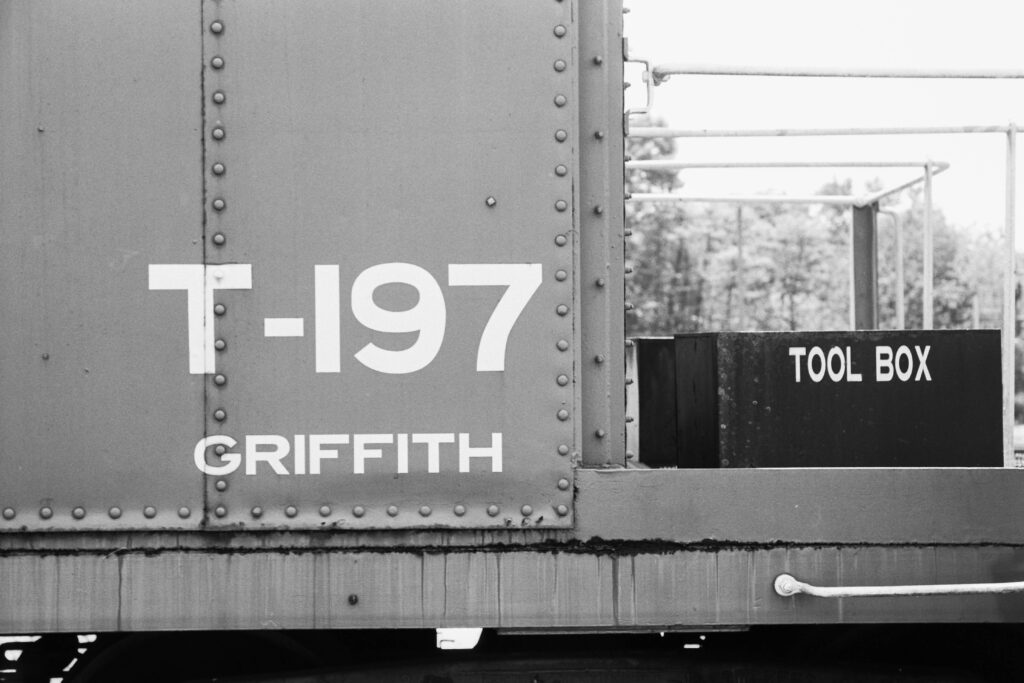

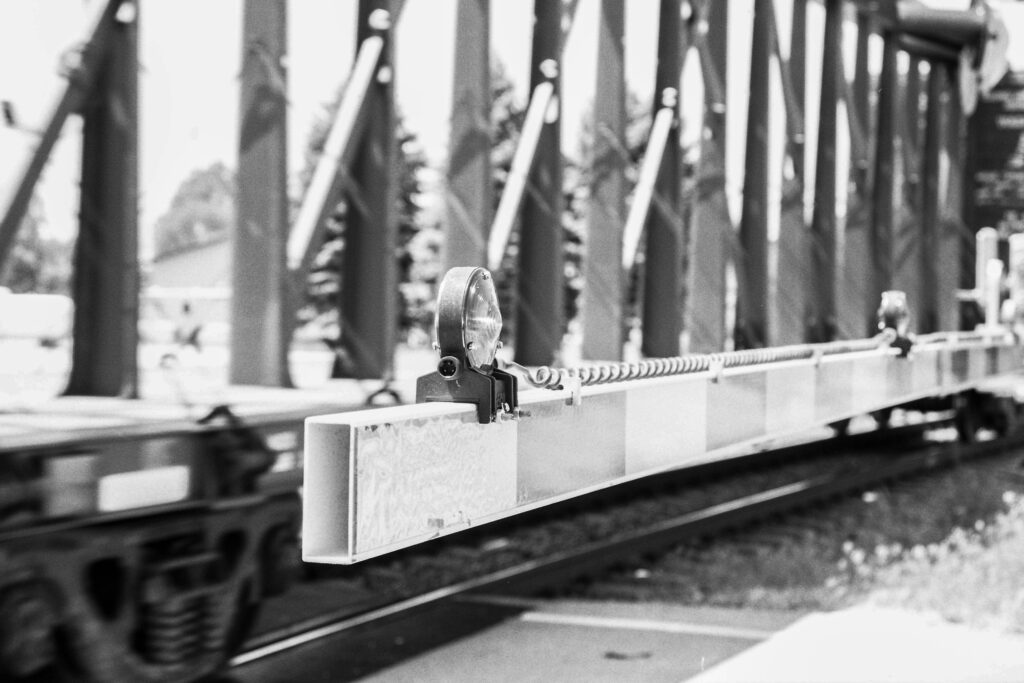
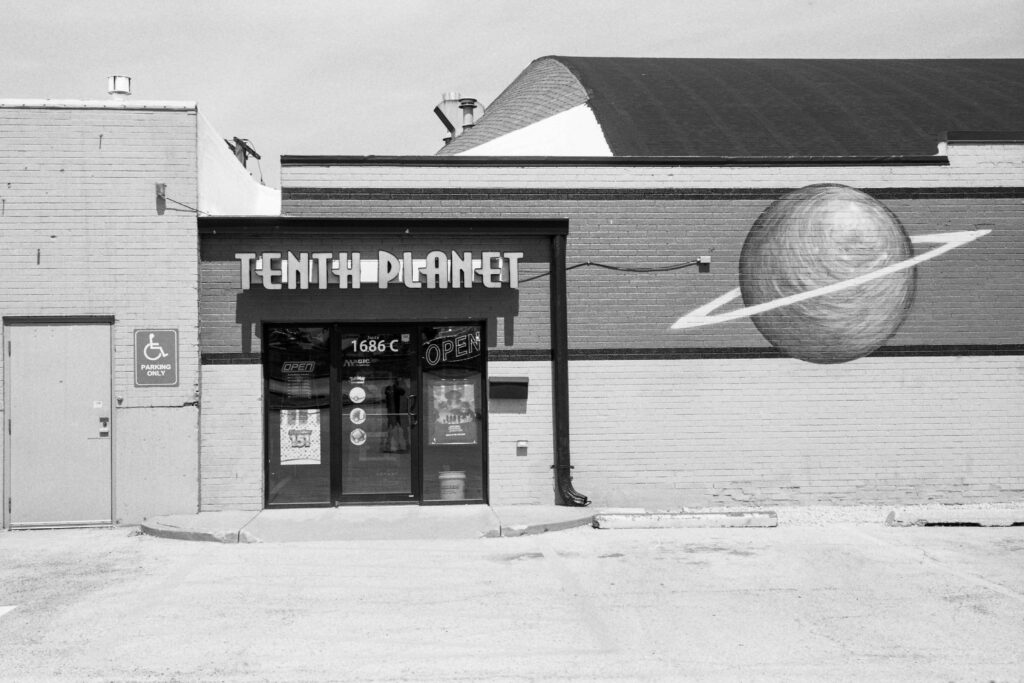

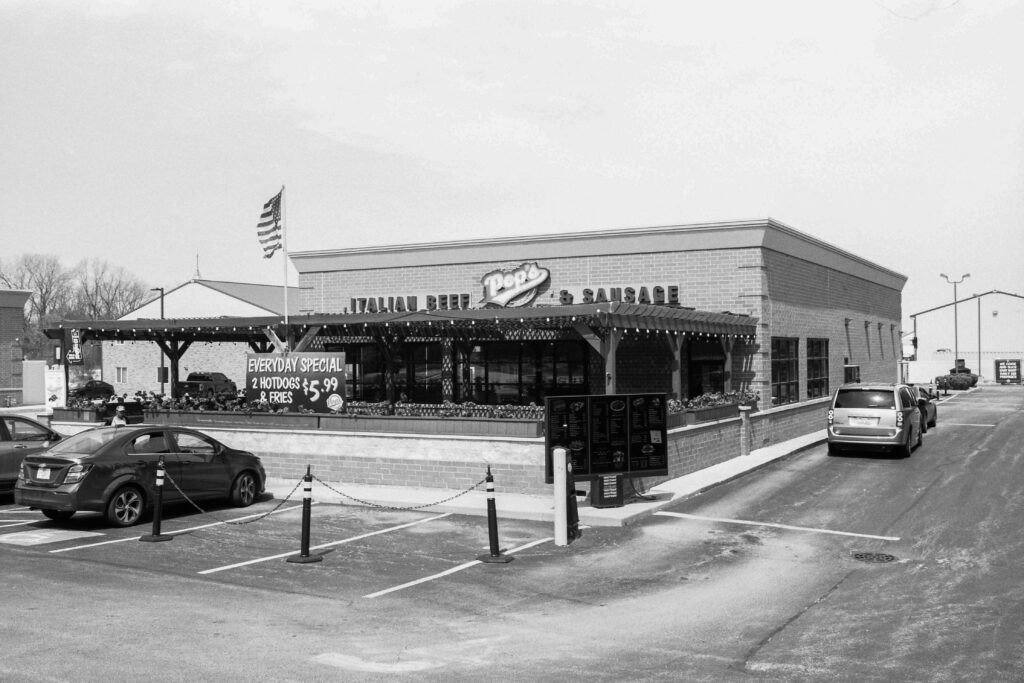
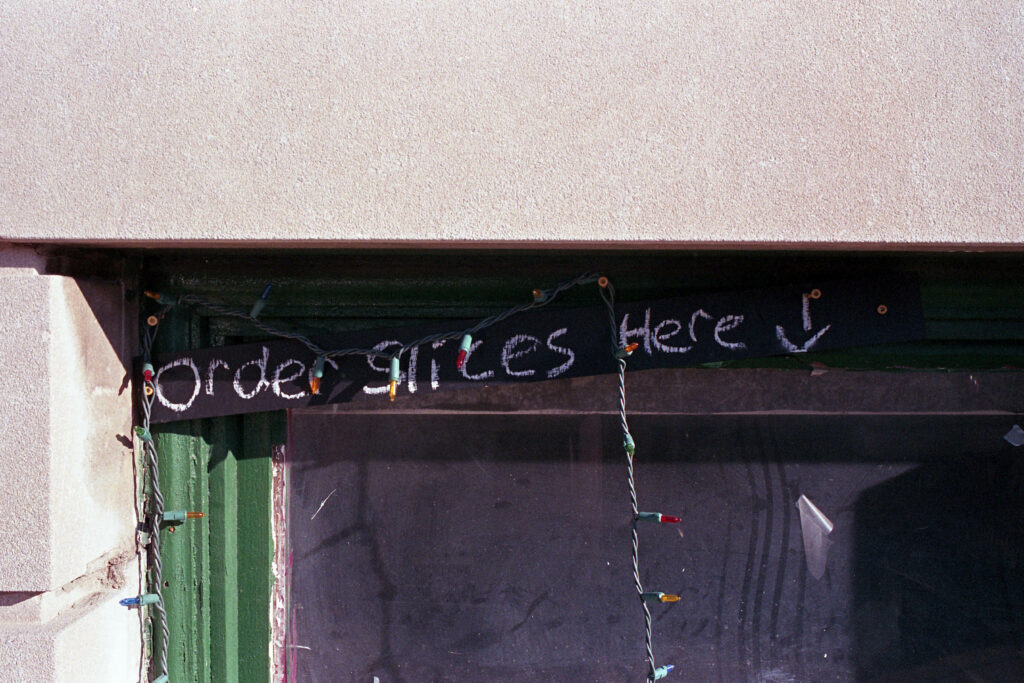
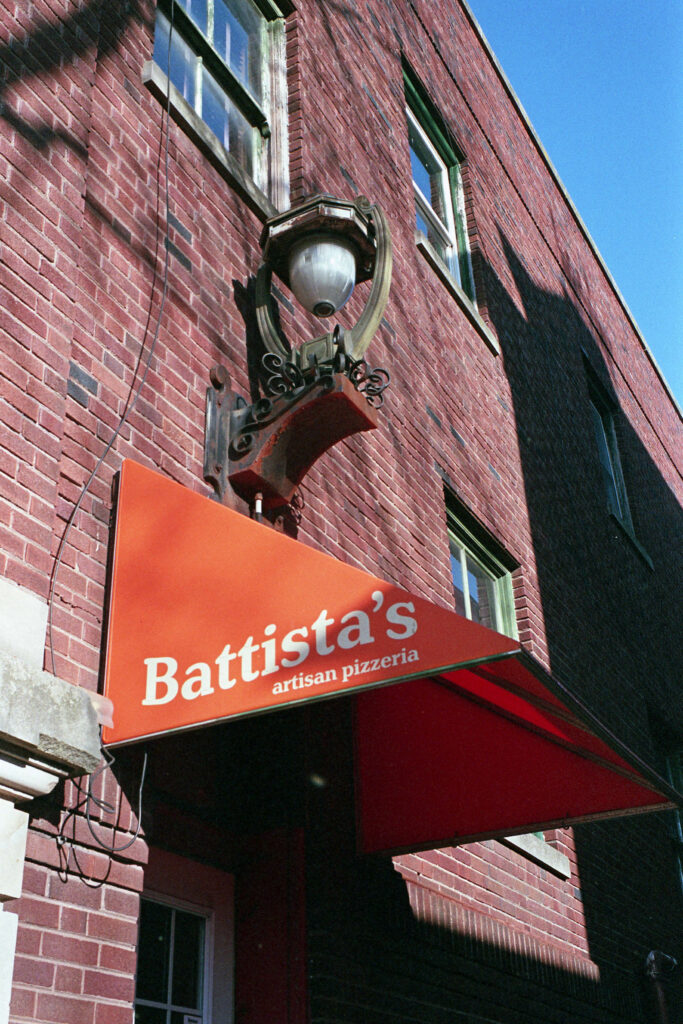
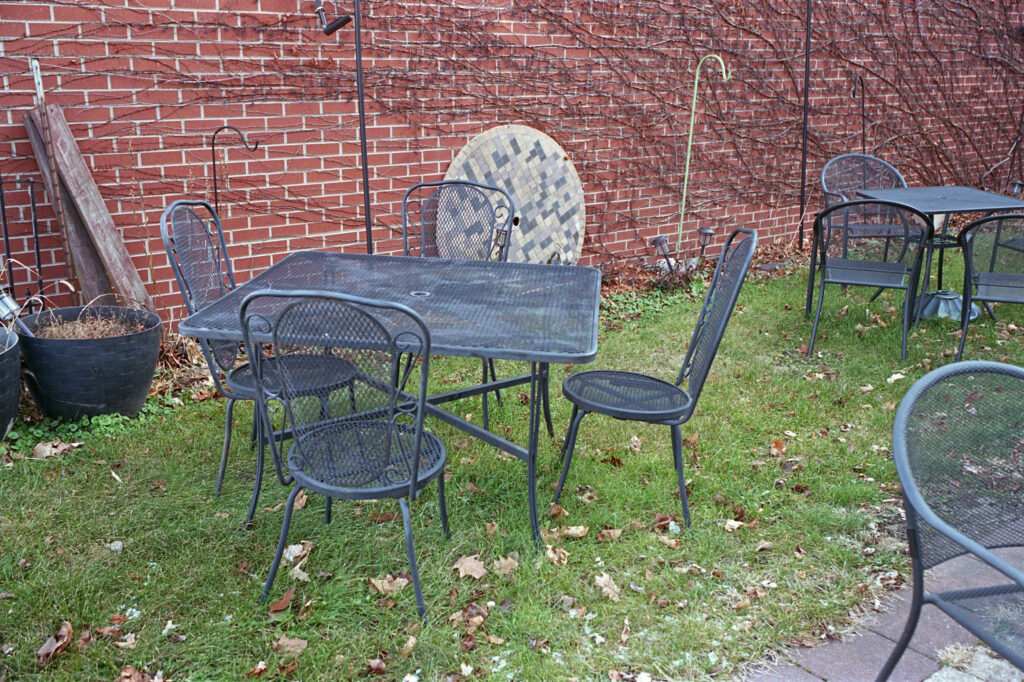
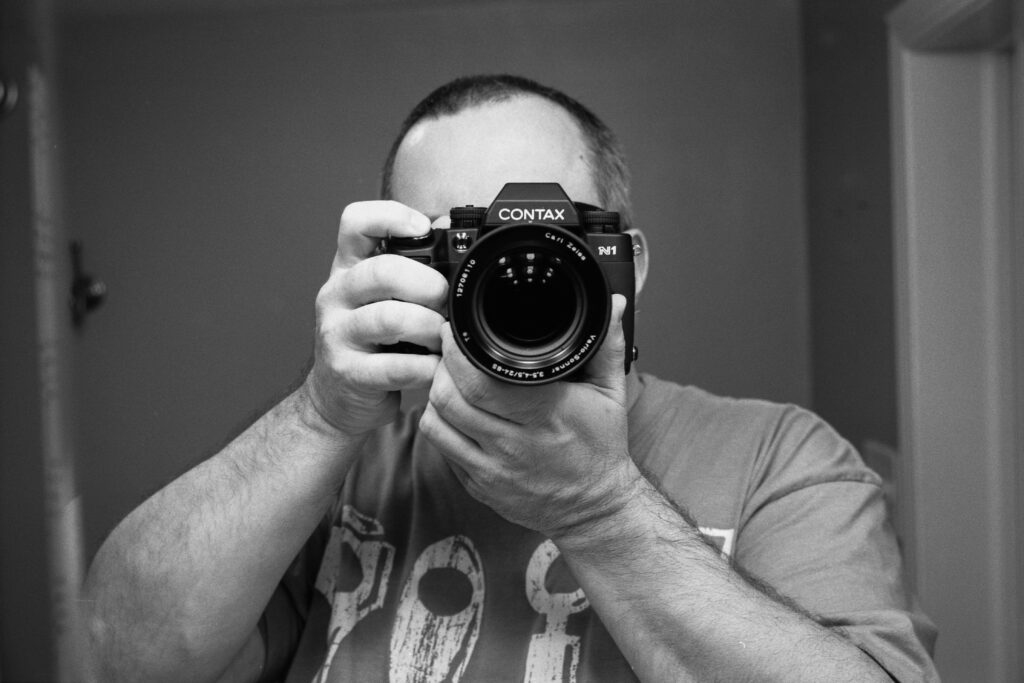
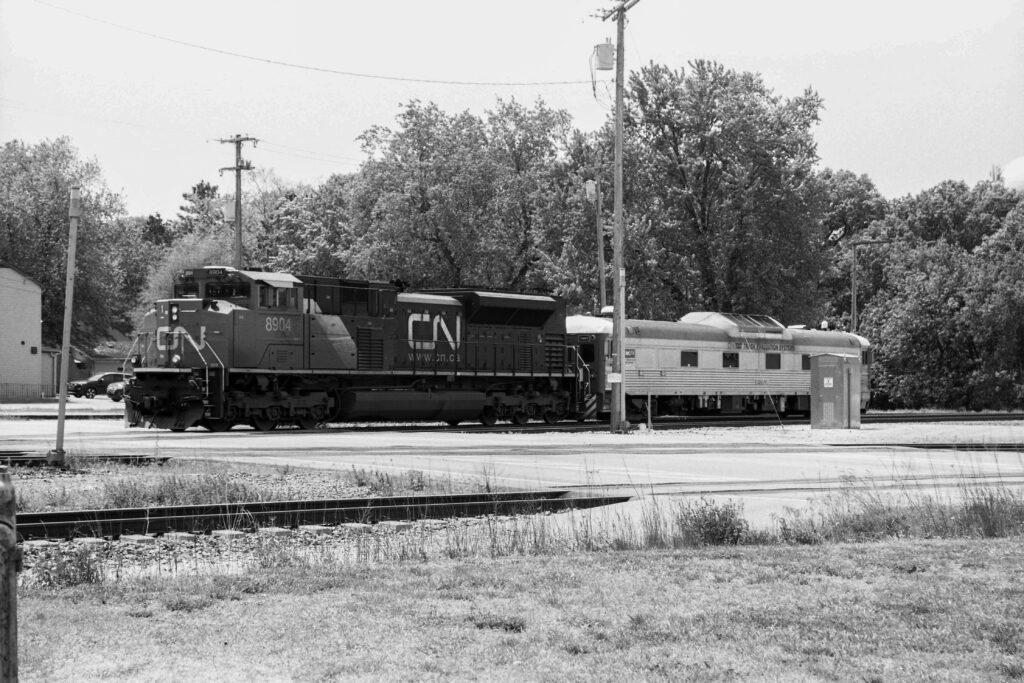
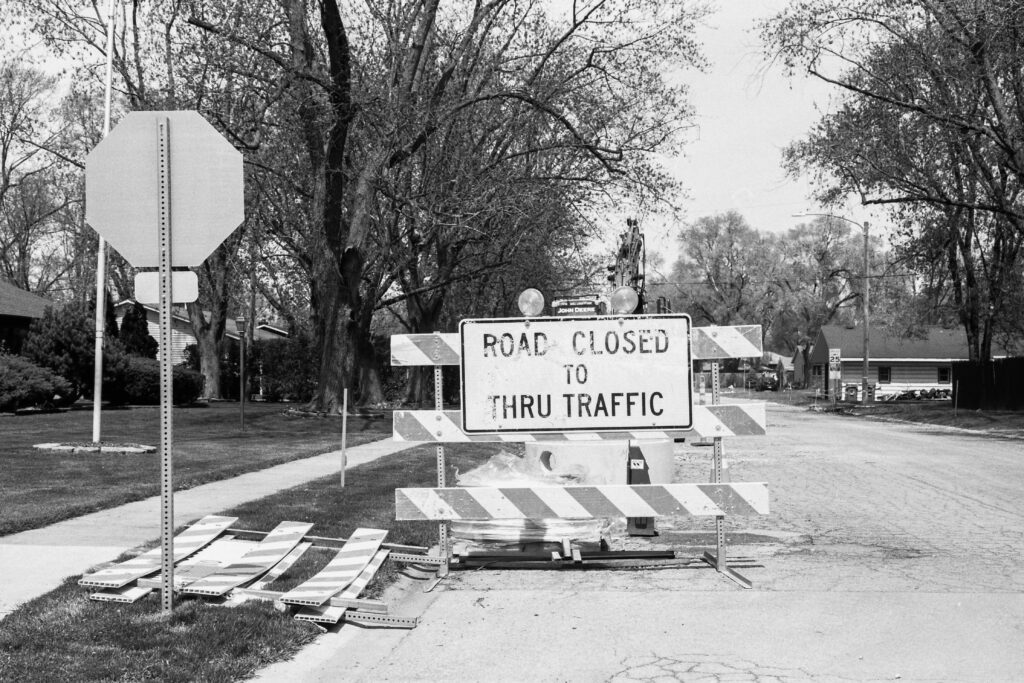

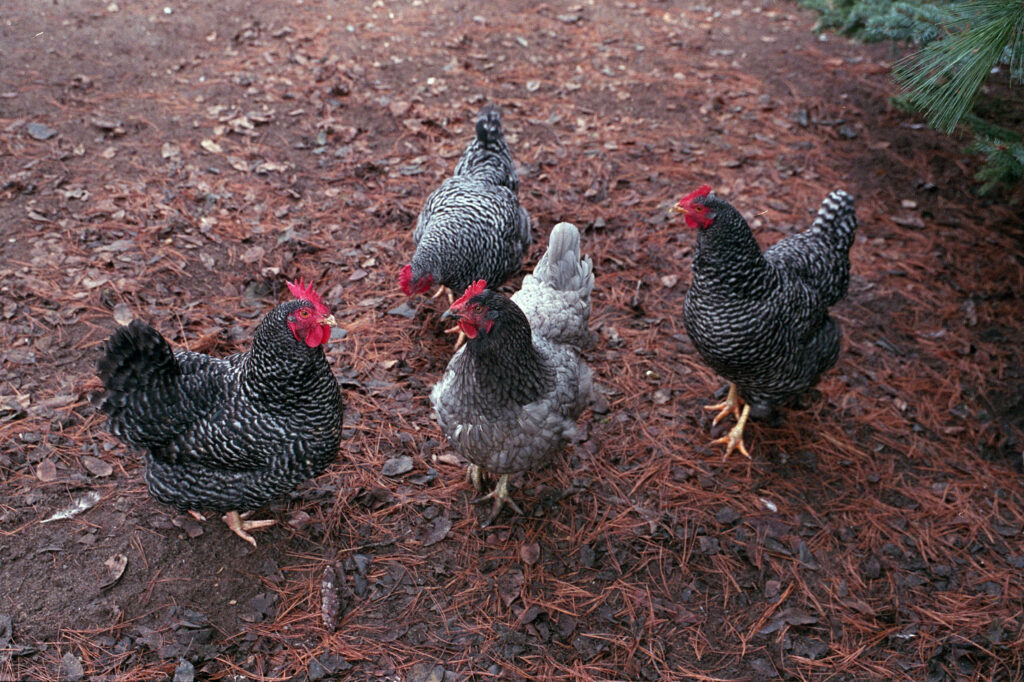
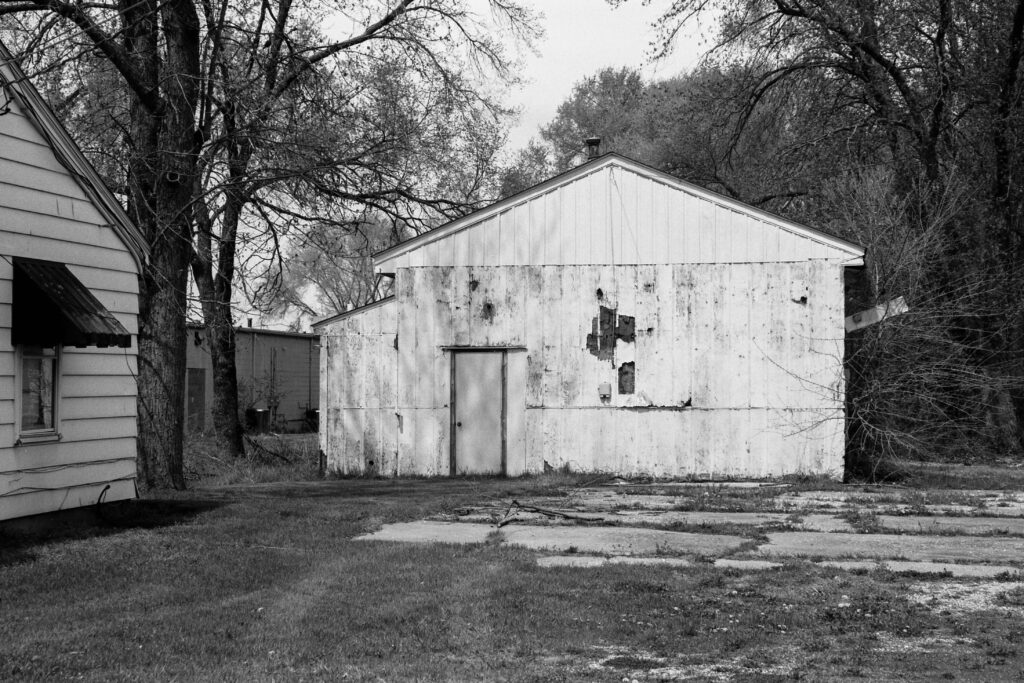
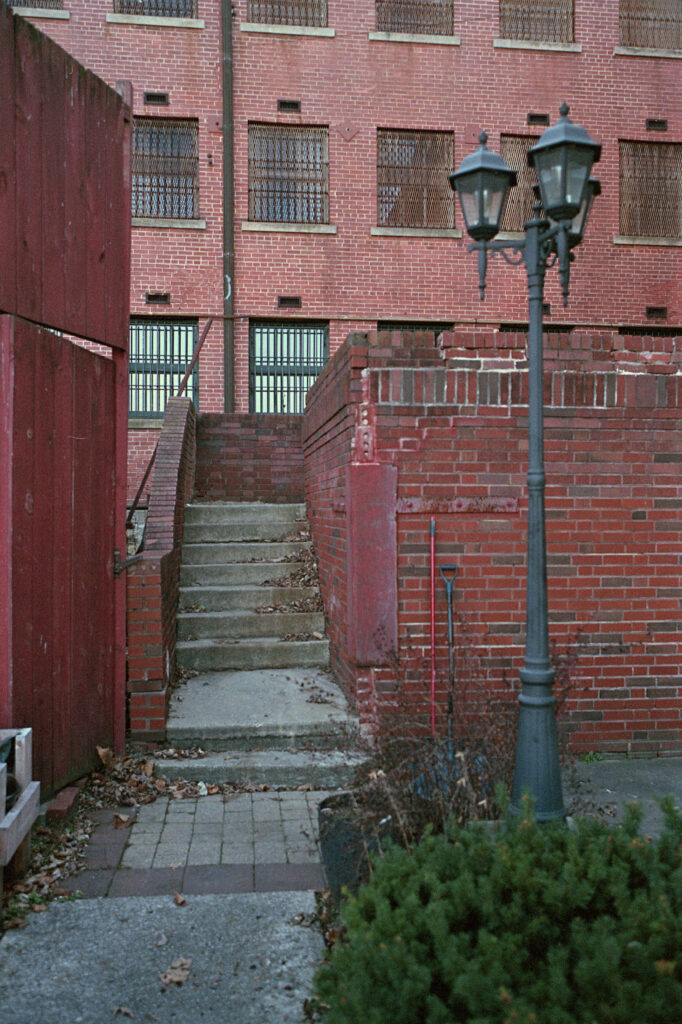
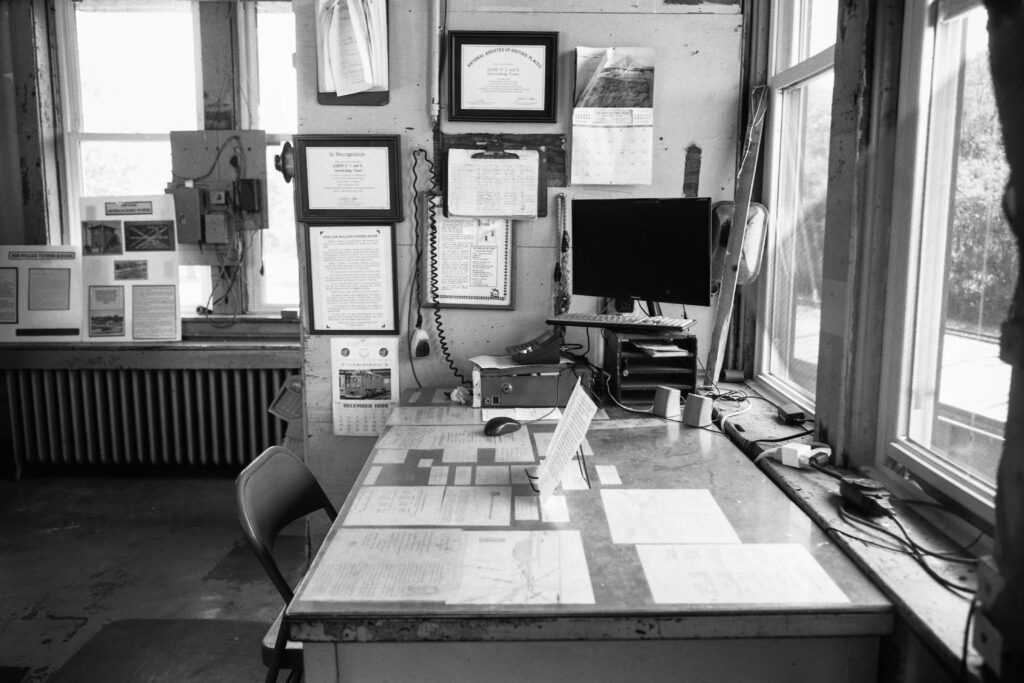

The Minolta 7 has also the doubled exposure compensation dial, in half and third stops. Maybe it was the fashion around that time?
Pentax doulbe-launched film and digital cameras: The oddly-named *ist and its DSLR pal, the *istDL.
“In February 2022, around the same time the Contax N Digital would have been released, Kyocera announced a less expensive model called the Contax NX.” Really? 2022 and not 2002?
“When Yashica started producing Contax SLRs in the mid 1970s, a new lens mount was designed to replace the fledgling M42 screw mount used by Yashica SLRs of the 1960s and 70s.” Fledgling is the wrong word in this context. Perhaps venerable would be a better choice.
fledg·ling
/ˈflejliNG/
noun
a young bird that has just fledged.
Similar:
chick
baby bird
nestling
a person or organization that is immature, inexperienced, or underdeveloped.
“a New York businessman accused of defrauding a fledgling Broadway production has been held without bail”
By the mid-1970s, the M42 screw mount was hardly a baby chick.
I checked the prices on eBay. There are 10s of bodies listed at semi-reasonable prices. But other than the 24-85 lens, the asking prices for most of the other lenses are $600 and up. Sadly, it’s a bit of a risk for a complex electronic camera.